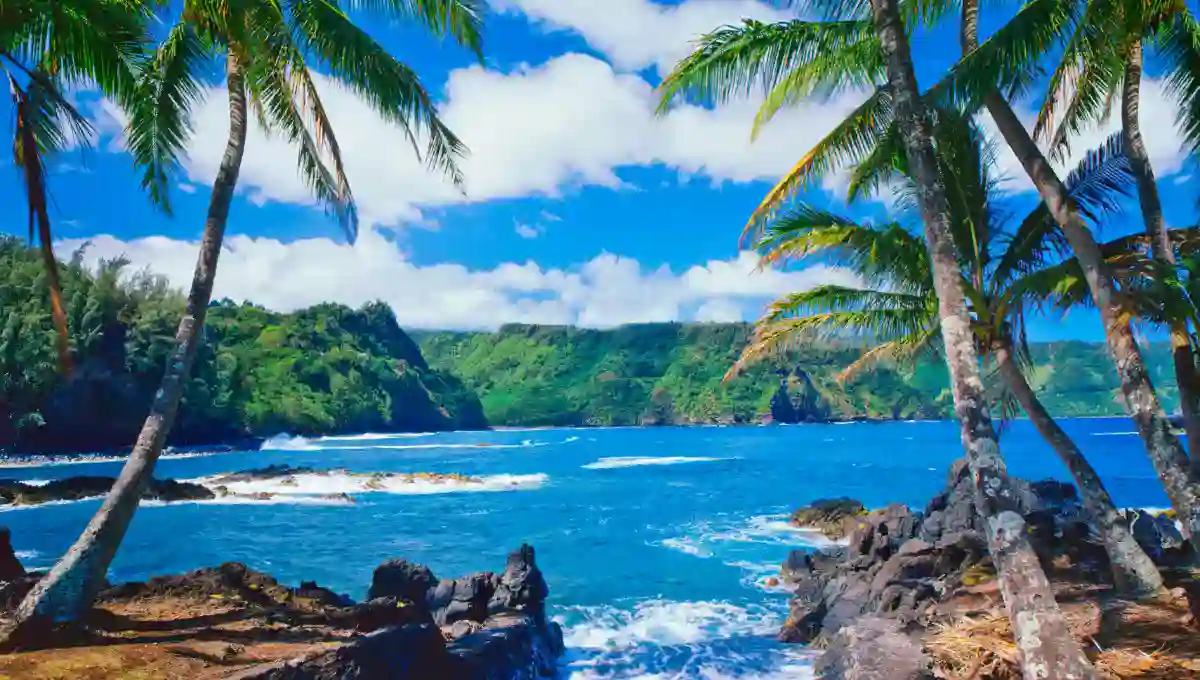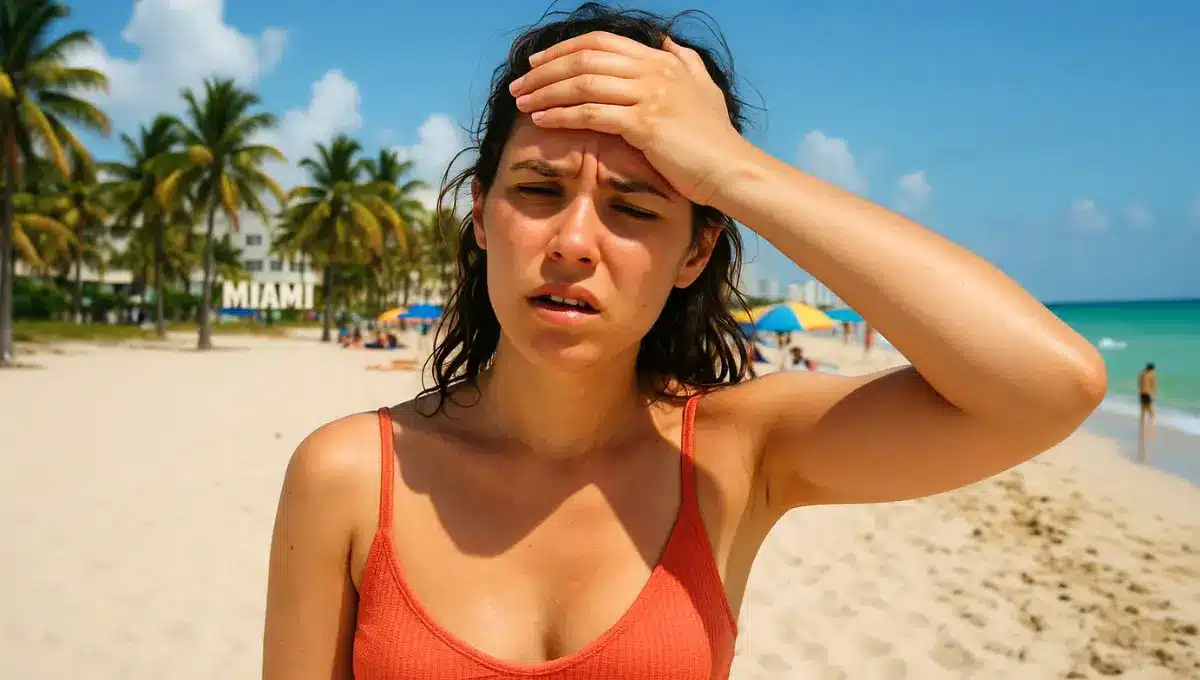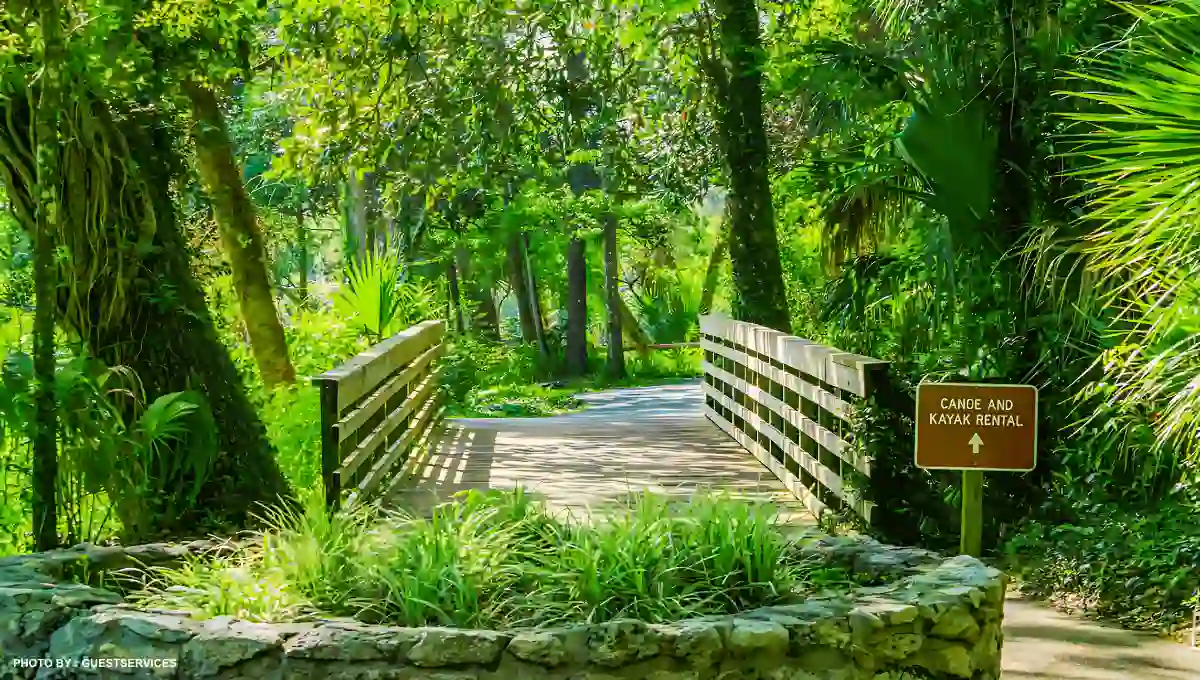When is the Best Time To Visit Hawaii? The best time to visit Hawaii is typically during April to June or September to mid-December for pleasant weather and fewer crowds.
Hawaii is a beloved vacation destination known for its warm weather and sunny beaches.
However, the rainfall and visitor numbers can vary significantly. November tends to be the least visited month, but it’s also one of the rainiest. On the other hand, June may see less rain but can be crowded with families on vacation.
When planning your trip, it’s essential to consider historical averages and other factors to make the most of your Hawaiian getaway.
- 🌦️ Understanding the Weather Conditions of Hawaii
- 🌻 Visiting Hawaii During The Spring (March to May): Blooming Beauty
- ☀️ Visiting Hawaii During The Summer (June to August): Sun, Sand, and Surf
- 🍁 Visiting Hawaii During The Fall (September to November): Tranquility and Serenity
- ⛄ Visiting Hawaii During The Winter (December to February): Escaping the Cold
- 🤔 What is the Best Month to Visit Hawaii?
- 1. Visiting Hawaii in January
- 2. Visiting Hawaii in February
- 3. Visiting Hawaii in March
- 4. Visiting Hawaii in April
- 5. Visiting Hawaii in May
- 6. Visiting Hawaii in June
- 7. Visiting Hawaii in July
- 8. Visiting Hawaii in August
- 9. Visiting Hawaii in September
- 10. Visiting Hawaii in October
- 11. Visiting Hawaii in November
- 12. Visiting Hawaii in December
- 🙋🏻♀️ FAQs About Best Time To Visit Hawaii
- 🗨️ Share your thoughts in the comments about what you believe is the best time to visit Hawaii!
 🌦️ Understanding the Weather Conditions of Hawaii
🌦️ Understanding the Weather Conditions of Hawaii

Hawaii’s unique geography and variety of microclimates have an impact on the weather here. Planning your activities and making the most of your trip to the islands will be easier if you are familiar with the weather trends.
- Overall Climate: Hawaii experiences a year-round mild tropical climate. Average highs range from 78 to 88 °F (25 to 31°C) in the summer and from 70° to 80°F (21 to 27°C) in the winter. Nice breezes come from the trade winds, especially near the seaside.
- Rainfall Patterns: The rainy season (winter) and the dry season (summer) are the two main rainfall seasons in Hawaii. The rainy season normally lasts from November to March and is marked by more rainfall and sporadic showers. Less rain and more sunshine define the dry season, which lasts from April to October, making it perfect for outdoor activities.
- Microclimates: Because of Hawaii’s diverse geography, each island has a unique microclimate. Due to increased rainfall brought by the trade winds, the windward (northeastern) side of each island tends to be wetter and greener. The leeward (southwestern) side benefits from more sunshine and dry weather because it is protected from the dominant winds.
- Trade Winds and VOG: Hawaii’s weather is significantly influenced by trade winds. The islands’ relative coolness is helped by the clean, refreshing air carried by these northeast breezes. The Big Island’s active volcanoes can occasionally release volcanic emissions that cause “vog,” a phenomenon that causes foggy skies and poor air quality and mainly impacts the southern regions of the islands.
- Tropical Storms: Although they are somewhat uncommon, tropical storms and hurricanes can affect Hawaii. The official hurricane season lasts from June through November, with August and September seeing the most activity. Although the physical position of the islands frequently deflects or weakens storms, it is crucial to monitor weather forecasts during this time.
Visitors can plan their activities and bring the right gear by being aware of Hawaii’s weather conditions. It’s always a good idea to check the local forecast and be ready for little differences in the weather throughout the islands’ various areas and levels.
| Average | Jan | Feb | Mar | Apr | May | Jun | Jul | Aug | Sep | Oct | Nov | Dec |
|---|---|---|---|---|---|---|---|---|---|---|---|---|
| High | 79°F | 79°F | 80°F | 81°F | 83°F | 85°F | 86°F | 87°F | 87°F | 85°F | 83°F | 80°F |
| Temp. | 73°F | 73°F | 74°F | 75°F | 77°F | 79°F | 80°F | 81°F | 80°F | 79°F | 77°F | 75°F |
| Low | 68°F | 68°F | 69°F | 71°F | 72°F | 74°F | 75°F | 76°F | 76°F | 75°F | 73°F | 70°F |
🌻 Visiting Hawaii During The Spring (March to May): Blooming Beauty
The weather might be perfect in the spring.
Hawaii experiences low to mid-80s temperature highs on average from March through May. The low temperature is usually around 70 degrees. With an average rainfall of 3 1/2 inches in March, springtime sees the highest precipitation, but by May, that average has dropped to just 1 1/2 inches.
To avoid crowds and peak rates at hotels and resorts while still enjoying some fantastic Hawaii weather, the late spring months of April and May are a great time to visit Hawaii.
☀️ Visiting Hawaii During The Summer (June to August): Sun, Sand, and Surf
In Hawaii, these are the driest and warmest months of the year.
Hawaii begins to warm up a little in June through August, with highs in the upper 80s and low 90s. Low temperatures, on average, range from 72 to 75 degrees. The least rain falls, an average of approximately 1 3/4 inches per month, during the summer.
With more families traveling during this period with kids on summer vacation, the summer is Hawaii’s second biggest travel season.
🍁 Visiting Hawaii During The Fall (September to November): Tranquility and Serenity
Highs from September through November often begin in the low 90s and upper 80s. Low 70s are the norm for lows. In November, the average amount of precipitation varies from 2 1/2 inches to slightly under 5 inches. In Hawaii, November and December are the months with the most rainfall.
Hence, if you want to avoid the crowds and benefit from lower accommodation costs, November is one of the finest periods to travel to the islands. Remember to bring a raincoat.
⛄ Visiting Hawaii During The Winter (December to February): Escaping the Cold
December to February sees temperatures in the mid to low 80s. Lows, on average, are in the mid-sixties. With roughly 3.5 inches of rain every month, the winter season experiences the most rainfall overall.
Hawaii experiences its busiest travel period from mid-December to early March. It’s still a fantastic time to travel to Hawaii to escape the winter but be prepared for higher hotel and resort costs and larger crowds.
🤔 What is the Best Month to Visit Hawaii?
We discussed how the quality of a trip to Hawaii can differ from month to month.
1. Visiting Hawaii in January
One of the busiest times for travelers to Hawaii is in January. If you want to travel in January, book your accommodations far in advance because they will sell out.
In addition to being a busy month for travelers, January also sees the annual PGA golf championships on various islands.
The typical high and low temperatures in January are 81 and 64 degrees, respectively, with three inches of precipitation falling.
2. Visiting Hawaii in February
Hawaii travel is also prevalent in February. Average monthly temperatures are 81 degrees in the high and 66 degrees in the low, with 3 1/2 inches of precipitation.
In Hawaii, February is one of the wettest months of the year. It’s also well-liked by tourists who want to escape the dreary, chilly weather on the mainland.
3. Visiting Hawaii in March
March will be a busy time to go anywhere due to spring break, and Hawaii is no exception. Averaging 82 degrees for the high and 68 degrees for the low, March sees 3 1/2 inches of precipitation. Certain occasions, including the annual Honolulu Festival and the Kona Brewers Festival, occur in March and may draw larger crowds.
4. Visiting Hawaii in April
April marks the beginning of the waning tourist season, except for Easter weekend. Average high and low temperatures are 84 and 70 degrees, respectively.
Planning a trip to Hawaii in April is an excellent idea because the average amount of precipitation lowers to just 2 inches for the entire month.
5. Visiting Hawaii in May
In Hawaii, the dry season begins around May. Only 1 1/2 inches of rainfall on average during the month.
With an average high of 86 degrees and a low of 70 degrees, the weather is also fantastic. May is one of Hawaii’s less popular travel months, so rates for hotels and resorts should be relatively affordable.
6. Visiting Hawaii in June
In June, Hawaii begins to heat up. June’s average high and low temperatures are 88 and 72 degrees, respectively.
Less than 1 3/4 inches of rain fell on average during the month. On the other hand, the tourist season picks back up in June as families take advantage of the summer vacation.
June is jam-packed with celebrations and festivities on all the islands. The King Kamehameha Celebration observed on the islands, and the Kapalua Wine & Food Festival on Maui are two significant occasions.
To commemorate Kamehameha the Great, who united the Hawaiian Islands in 1810 and became Hawaii’s first king, King Kamehameha Day was established on June 11.
The Kamehameha festivities include ‘ono (excellent) food, traditional Hawaiian dance, music, chant, practices, and arts and crafts.
7. Visiting Hawaii in July
In Hawaii, the rainy season resumes in July. July’s average high and low temperatures are 88 and 73 degrees, respectively. But over the month, there is an average of more than 2 1/4 inches of rain.
Every year on the third weekend in July on the island of Oahu, the Moanalua Gardens Foundation sponsors the Prince Lot Hula Competition.
The mission of the Moanalua Gardens Foundation has been to safeguard Hawaii’s natural and cultural resources since 1970.
8. Visiting Hawaii in August
Are you searching for heat? In Hawaii, August is often the warmest month. The typical high and low temperatures are 90 and 75 degrees, respectively.
Over the month, there is an average of over 1 1/4 inches of rain. Although it starts to slow down, August still experiences some of the peak season traffic that June and July do.
If you don’t mind a little bit of heat, it might be an excellent time of year to think about taking a summer vacation!
9. Visiting Hawaii in September
Beginning in September, when children return to school, tourism in Hawaii starts to decline slightly for a few months.
Hawaii experiences an average high temperature of 90 degrees and a typical low of 73 degrees in September.
The state shares about 2 1/2 inches of rain on average in September, significantly less than the subsequent rainier months as fall approaches.
10. Visiting Hawaii in October
October is a busy month in Hawaii due to the Hawaii International Film Festival, Hawaii Food & Wine Festival, Kauai Chocolate and Coffee Festival, and Email Ai Alakai Festival all taking place on various islands.
On the Hawaiian Islands, October’s average high temperature is 88 degrees, while the typical low is 73 degrees.
Nonetheless, the islands also experience an increase in rainfall, with an average of almost 3 1/4 inches falling during October.
11. Visiting Hawaii in November
You should anticipate favorable weather in Hawaii if you want to attend the Big Island’s Annual Kona Coffee Culture Festival. But in Hawaii, November is the wettest month.
Hawaii experiences an average rainfall of about 5 inches in November, making it one of the wettest months. November’s average high and low temperatures are 84 and 72, respectively.
12. Visiting Hawaii in December
With an average high temperature of 82 degrees and a low temperature of 66 degrees in December, the Honolulu Marathon, held that month each year always offers ideal running conditions.
With an average rainfall of around 3 1/2 inches in December, the month can be pretty rainy. However, the islands occasionally have much higher December precipitation totals.
🙋🏻♀️ FAQs About Best Time To Visit Hawaii
When it comes to figuring out the best time to visit Hawaii, it’s natural to have a lot of questions. But don’t worry—I’ve got you covered! Below, I’ll answer some of the most commonly asked questions to help you plan your perfect Hawaiian getaway.
Q. What is the best time to visit Hawaii?
A. The best time to visit Hawaii is typically during April to June or September to mid-December when the weather is pleasant and there are fewer crowds.
Q. Is it a good time to vacation in Hawaii?
A. Yes, it’s a good time to vacation in Hawaii during April to June or September to mid-December for favorable weather and fewer crowds.
Q. What is the busiest time to travel in Hawaii?
A. The busiest time to travel in Hawaii is generally during the summer months (June to August) and the winter holidays (December to January).
Q. What are the best and worst months to visit Hawaii?
A. The best months to visit Hawaii are April, May, September, and October, while the worst months are usually January and February due to higher rainfall.
Q. What is the season in Hawaii?
A. Hawaii experiences two main seasons: dry season (April to October) and wet season (November to March), with variations depending on the island.
Q. What is the cheapest time of year to visit Hawaii?
A. The cheapest time of year to visit Hawaii is typically during the spring (April to June) and fall (September to mid-December) when there are fewer tourists and lower accommodation prices.
🗨️ Share your thoughts in the comments about what you believe is the best time to visit Hawaii!
Also, don’t forget to book your personalized holiday package with Fiery Trippers. Let us make your vacation a romantic as well as a dreamy getaway.
What No One Tells You About Visiting Miami in Summer (But I Will 😅)
10 Florida State Parks So Beautiful, They’ll Make You Cancel Your Beach Trip!
Stay in a Luxury Floating Bungalow in Key Largo—Just an Hour from Miami


